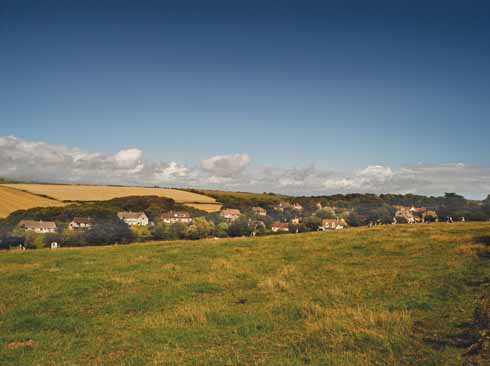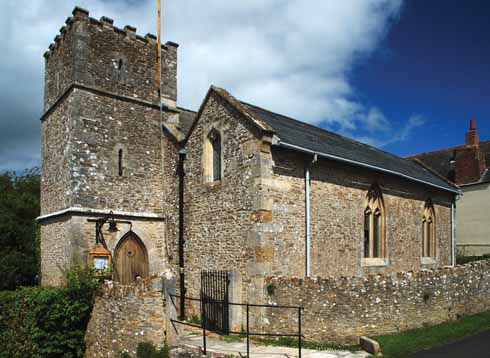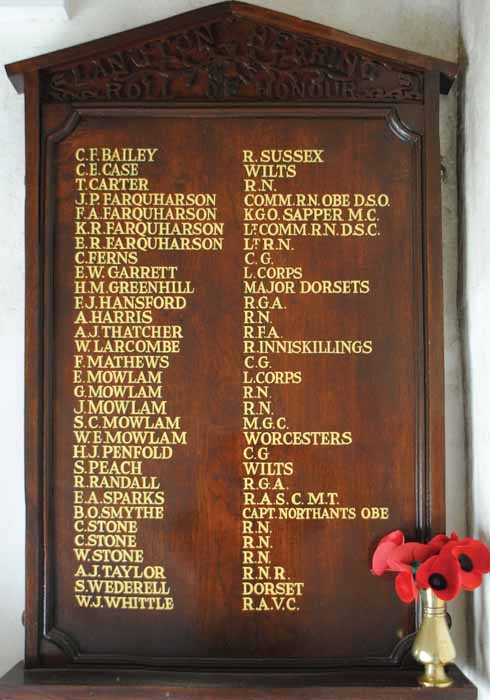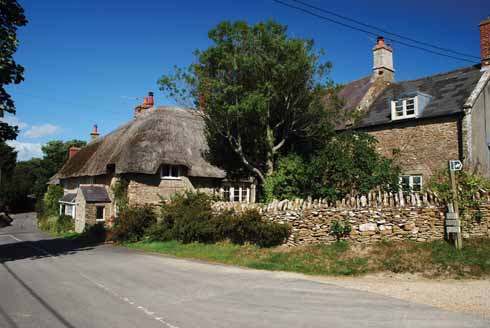Langton Herring
Stephen Roberts visits Dorset’s only 'Thankful Village'
Published in November ’14
Virtually every community in the United Kingdom suffered losses during World War 1. Each November their war memorials naturally become the focus of remembrance, but what of the small number of villages that do not have a memorial?
The term ‘Thankful Village’ was coined by writer Arthur Mee in the 1930s to describe a village that suffered no fatalities amongst those of its men who went off to fight in World War 1. Of the estimated 16,000 villages in England Mee identified 24 that could be called Thankful. More recent research has identified 53 parishes in England and Wales from which all the soldiers returned (there is not a single one in Scotland or Ireland). There are nine such villages in Somerset, but none in Wiltshire, Hampshire or Devon, and there is just one in of Dorset: Langton Herring, which lies behind Chesil Beach in the west of the county. Langton Herring, like thirteen villages in England and Wales is ‘Doubly Thankful’, having had all those who served in the armed services during World War 2 also returning home.
Langton Herring lies about five miles north-west of Weymouth and is set on a ridge above the Fleet. It was on this lagoon lying behind Chesil Beach, where in the spring of 1943, Barnes Wallis conducted the prototype tests of his famous ‘bouncing bomb’. The village is also within sight of the hilltop memorial to Vice Admiral Sir Thomas Masterman Hardy (of HMS Victory fame). It is a small village with a population that has averaged around 150 souls over the last century, peaking at 169 and dropping as low as 110 in various census returns over that time.

Though doubly thankful, Langton Herring nonetheless played its part in the wars; Barnes Wallis tested a prototype of the bouncing bomb on the Fleet
The name of the village is derived from the Old English ‘Lang’ and ‘Tun’ meaning long farmstead or estate, with the 13th Century ‘Harang’, being a family name of the then lords of the manor. The village has always been extended or strung out but continues to have one principal landowner. The old open fields were enclosed in 1761, but signs of open strip cultivation are still visible to the trained eye. A mile to the east of the village is Langton Cross, a medieval stone monolith, evidence of human habitation going back hundreds of years.
The village has retained its quaint appearance, with thatched cottages from the 17th and 18th centuries still in evidence and houses predominantly built in the local yellow stone. This mainly agricultural and one-time fishing village is pretty much hidden from the main road.
The small stone Gothic church of late 13th-century origin is the squat parish church of St Peter, which is one of the village’s four listed buildings; it has a fine 15th-century font and a list of rectors dating back to the end of the 13th century. The other listed buildings are the Old Rectory, Village Hall (formerly the village school) and Village Pound, a stone walled enclosure close to the 400-year-old pub, the Elm Tree Inn.

The village hall at Langton Herring is made of the warm stone typically used for older buildings in the village
There is, of course, no war memorial in the village, there being no war deaths to remember, but there is a horse chestnut tree planted in the centre of the churchyard in memory of Sir Winston Churchill, with a small plaque bearing the words, ‘We shall never surrender’. The porch of the church also includes a splendid wooden roll of honour board from World War 1 naming the 31 men ‘of the village’ who went away to fight. Eleven of the 31 were seamen (ten Royal Navy and one Royal Naval Reserve). Of all the Thankful Villages that have rolls of honour naming each man’s unit, Langton Herring has the highest proportion who served at sea, probably due to the closeness of the Portland Naval Base.
The memorial includes five men by the name of Mowlam, four Farquharson and three Stone. It is incredible really that such a small community could have sent away as many as 31 men to fight and, given the carnage of the World War 1, even more incredible that they all returned.
This is not entirely true, though; the first-named of the men honoured on the roll of honour did not actually return home. Charles Frederick Bailey, born in the village, but later a resident of Hampton, Middlesex, enlisted in the Royal Sussex Regiment and died from his wounds in 1917. He is remembered on the memorial screen at St Mary’s Church, Hampton, but as Bailey’s mother still lived in Langton Herring, his name was also added to the Dorset village’s roll of honour, so that this son of the village could be remembered in the place of his birth.
The fact that he was not resident in the village at the time of his enlistment means that Langton Herring’s status as a thankful village holds true. There is also a World War 2 war grave in the village, that of Aircraftman LW Welham RAF, who died in 1941, aged 21, but again, he was not a ‘son of the village’ at the time of the conflict.
At remembrance time, poppies are sold in the village of Langton Herring and the church is also decorated with poppies. Co-churchwardens Judy Barrett and Margaret Connolly explain: ‘St Peter’s is usually empty on Remembrance Sunday and therefore silent. It is a wonderful silence, soothing and tranquil. For me,’ says Judy, ‘that silence links this, a Thankful Village, with every other Act of Commemoration taking place, from Whitehall to the Menin Gate. We grieve with the nation. We are a part of it, not apart from it.’
Margaret adds: ‘As there is no Langton Memorial, we don’t have a remembrance service. Instead we go to our sister churches (in Abbotsbury and Portesham), who hold it alternate years, so that we can all be together, to honour family, friends and strangers who paid the ultimate sacrifice. My uncle-in-law is buried in Portesham. My mother’s great uncle never came home from 1914/18; his name is on the Menin Gate. Another came home but had been gassed. He suffered ill health for the rest of his life. These are all bound together in my remembrance prayers.’
For every thankful village there are countless others that were not so fortunate. Dorset has some 350 villages in total, so one thankful village represents under a third of one percent of the total (around the same as the national average). In all, around 700,000 British servicemen were killed, but over twice that many were wounded, and many more suffered with the after effects of what they had seen and experienced. Categorising villages as ‘thankful’ and ‘non-thankful’ in this context is a moot point. All communities were affected by the first truly global war. We today should all be thankful that our generation has not been involved in such a horrific conflict. The epitaph on Aircraftman Welham’s gravestone sums up that which we should all try to do: ‘Not just today, but every day, in silence we remember.’ ◗






